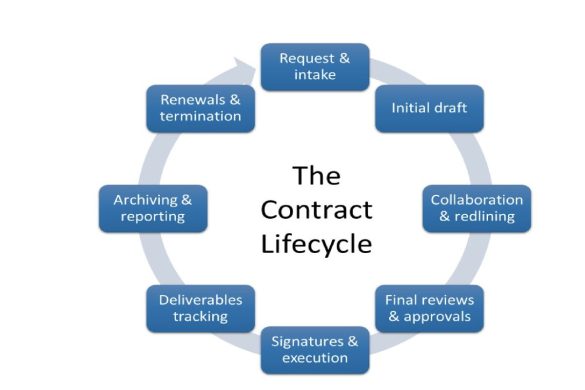Contracts are not merely legal papers for big businesses. They are vital tools that establish the terms of engagement in all sorts of relationships. And because they are so loaded with high-stakes content, managing them requires a well-thought-out strategy that pays attention to ensuring accuracy, compliance, and efficiency in every step of the process. If a contract is not properly managed throughout its life cycle, the business is at risk of incurring a whole range of unfavorable and even disastrous outcomes.
Contract Lifecycle Management offers a methodical process for managing contracts from their conception through to their termination. If companies follow the best practices associated with CLM and understand the principal phases of the process, then they stand a good chance of not only reducing risks associated with contracts but also increasing the chances of driving better business performance from the contracts that they execute.
-
Table of Contents
Contract Request and Creation
The business necessity that leads to a request for a contract activates the contract lifecycle. Standardized templates and pre-approved clauses are vital for consistency and compliance at this juncture. Using contract lifecycle management software can smooth the path to a first draft by better ensuring alignment with all relevant policies and by cutting down on the kinds of errors that seem to plague many initial documents.
-
Negotiation and Collaboration
Negotiating is where obligations, terms, and expectations get refined. Version control becomes vital. Electronic exchanges of documents necessitate change tracking, secure platforms for document exchange are essential, and centralized collaboration tools are beneficial.
Additionally, legal, procurement, and business units should be able to work in real time and with the same document. Finally, transparent communication during negotiations is a trust-building exercise.
-
Review and Approval
Contracts must be meticulously reviewed to ensure they comply with all legal, corporate, and risk-threshold standards before they can be executed. They should not be allowed to proceed to the next stage without a green light from every reviewer designated in the routing slip. Including subject-matter experts during this stage ensures that technical, financial, and operational considerations are properly addressed.
-
Execution and Storage
When approval is obtained, contracts are signed and securely stored in a concentrated repository. At this repository, the signed documents are also scanned and stored in digital form. This is an essential aspect of contract lifecycle management. Indexing contracts with searchable metadata further enhances retrieval efficiency and supports compliance audits.
-
Performance Tracking and Renewal
After contracts have been executed, they must be monitored to ensure all parties meet their obligations. The tracking of key dates – like renewals, expirations, and performance milestones should be done using automated reminders. This kind of proactive project management ensures that deadlines aren’t missed, identifies opportunities when a renegotiation could be helpful, and tracks compliance between the contract and the parties’ actions.
There are also analytical tools for monitoring the performance of contractual obligations that can reveal trends suggesting better ways to select vendors, price contracts, and manage risks.
Contract Lifecycle Management Is Necessary for Organizational Success
For businesses, successful contract management is essential for operational effectiveness. By using standardized processes, appropriate technology, and a focus on teamwork, organizations can not only manage these essential agreements but also derive maximum value from them while keeping risks to a minimum.

